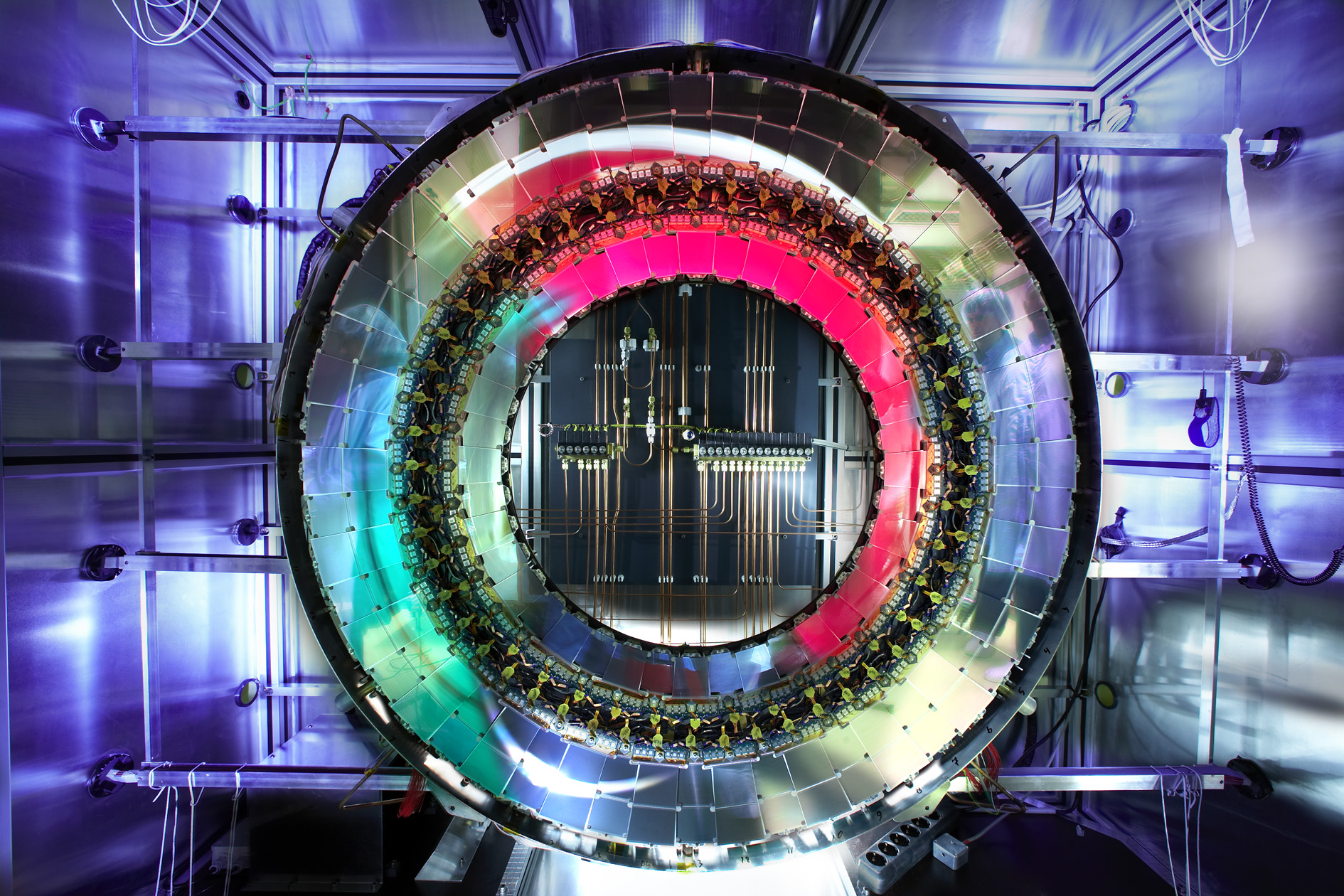SCT activities
(Français/English)
Semiconductor Tracker (SCT)
 |
Each SCT module consists of two planes of silicon micro-strip detectors glued back to back with a 40 mrad angle between them. This module design allows a space-position measurement with precision of 16 μm in Rφ and 580 μm in Z coordinate. Each module is read out by 12 chips, constructed in radiation hard technology.
The Geneva group was a founding group in the study of tracking detectors at the CERN LHC and accepted major R&D and construction responsibilities. Geneva was a major contributor to the design and prototyping of the end-cap and barrel modules. During the construction phase the group was responsible for the assembly and test of 657 of the 1976 silicon detector modules for the end-cap SCT discs. The group was responsible of the design and procurement of the carbon fiber barrel supports as well as barrel engineering coordination.

|
The barrel was inserted in the cavern in August 2006 and in May and June 2007 both end-caps were inserted into cavern too. During the sign-off period and after, several tests were performed. The sign-off of the whole system happened at the end February 2008. After this the SCT joined for the first time an ATLAS combined cosmic run in March 2008. After the brief run with beams in September 2008 data taking in ATLAS with cosmic muon runs did not stop. An extensive period of cosmic data taking with and without magnetic field started. During approximately two months, more than one million of cosmic tracks have been collected in the SCT detector.
DAQ and Online Data Monitoring
During the cosmic run period, with the system being integrated in ATLAS during long periods of time, a major development of the online monitoring tools has taken place. University of Geneva has been responsible for the development together with the day-by-day running of the monitoring. Geneva is responsible of determining the set of histograms important to the study of data quality performance as well as the implementation and optimization of the display tools.
The online software uses standard ATLAS framework (Athena) together with particular online (TDAQ) libraries. The software produces a large number of histograms, where a selected fraction of them are presented in a more user friendly way to help the SCT shifters in confirming the proper state of the detector. Two different online presenters show a carefully chosen selection of histograms to the shifter; the Online Histogram Presenter (OHP) and the DQM Display. The latter has the benefit of testing the histograms automatically by applying different algorithms and thresholds. These frameworks have been repeatedly modified and improved to meet the needs of the SCT and are still under development. The current structure is intended to allow a fast response from the shifter if the performance of the detector is degraded.
The Geneva group is also responsible for the training of shifters and the organization of the online monitoring shifts.
Geneva is also involved in the development of data acquisition (DAQ) and ATLAS database (DB) tools. In particular, it is responsible for establishing the link between the online calibration results and COOL DB (ATLAS Conditions Database). Results from the calibration define the status of the detector and are needed for the offline reconstruction and will be used in the High Level Trigger (HLT)."
Last modified: 2009/05/07